Thymoma pathophysiology
|
Thymoma Microchapters |
|
Diagnosis |
|---|
|
Case Studies |
|
Thymoma pathophysiology On the Web |
|
American Roentgen Ray Society Images of Thymoma pathophysiology |
|
Risk calculators and risk factors for Thymoma pathophysiology |
Editor-In-Chief: C. Michael Gibson, M.S., M.D. [1]; Associate Editor(s)-in-Chief: Amr Marawan, M.D. [2]
Overview
In 1999, a WHO Working group suggested a non-committal terminology (Masaoka classification), preserving the distinct categories of the histogenetic classification, but using letters and numbers to designate tumour entities. Recently, it has been very well accepted as it provides an easy comparison of clinical, pathological and immunological studies.[1]
Pathophysiology
Thymoma originates from the epithelial cell population in the thymus. Many subtypes are recognized, some of which have a better- or worse-than-general prognosis.[2]
Pathologic Classification
Thymic epithelial tumors can be divided according to the degree of differentiation into
| Type | Description |
|---|---|
| A | A tumor composed of a population of neoplastic thymic epithelial cells having spindle/oval shape, lacking nuclear atypia, and accompanied by few or no nonneoplastic lymphocytes. |
| AB | A tumor in which foci having the features of type A thymoma are admixed with foci rich in lymphocytes. |
| B1 | A tumor that resembles the normal functional thymus in that it combines large expanses having an appearance practically indistinguishable from normal thymic cortex with areas resembling thymic medulla. |
| B2 | A tumor in which the neoplastic epithelial component appears as scattered plump cells with vesicular nuclei and distinct nucleoli among a heavy population of lymphocytes. Perivascular spaces are common and sometimes very prominent. A perivascular arrangement of tumor cells resulting in a palisading effect may be seen. |
| B3 | A type of thymoma predominantly composed of epithelial cells having a round or polygonal shape and exhibiting no or mild atypia. They are admixed with a mild component of lymphocytes, resulting in a sheetlike growth of the neoplastic epithelial cells. |
| C | A thymic tumor (thymic carcinoma) exhibiting clear-cut cytologic atypia and a set of cytoarchitectural features no longer specific to the thymus, but rather analogous to those seen in carcinomas of other organs. Type C thymomas lack immature lymphocytes; whatever lymphocytes may be present are mature and usually admixed with plasma cells. |
Genetic Features
Genetic alterations reported for the different WHO histological thymoma subtypes[4]
| WHO Type | Chromosomal Gains | Chromosomal Losses |
| Type A | none | -6p |
| Type AB | none | -5q21-22,-6q,-12p,-16q |
| Type B3 | +1q | -6,-13q |
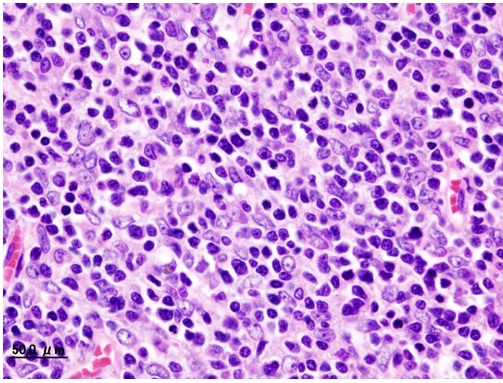 |
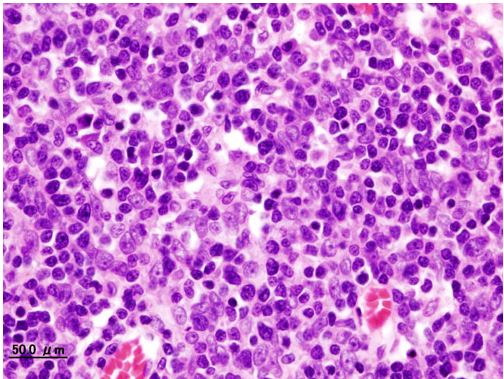 |
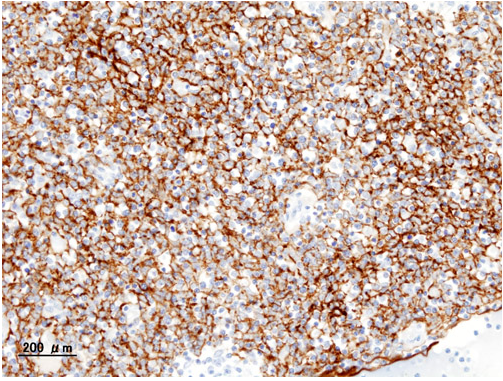 |
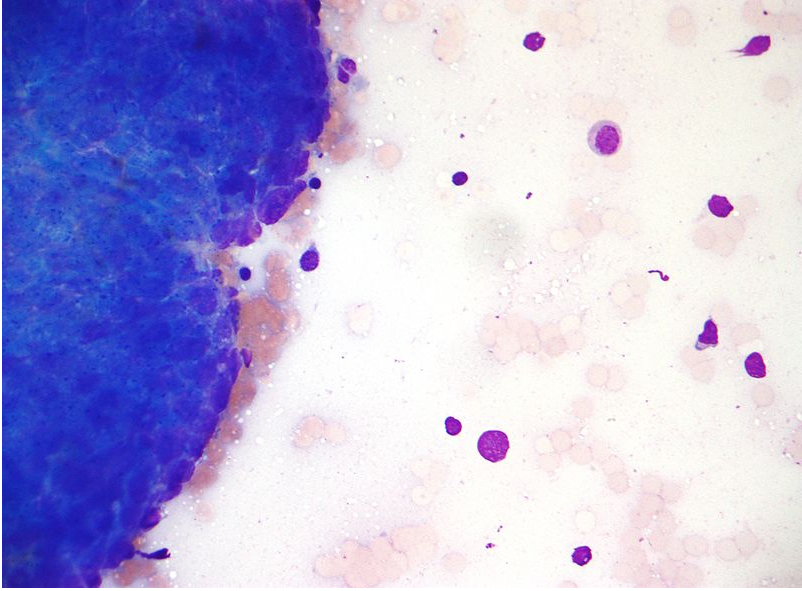 |
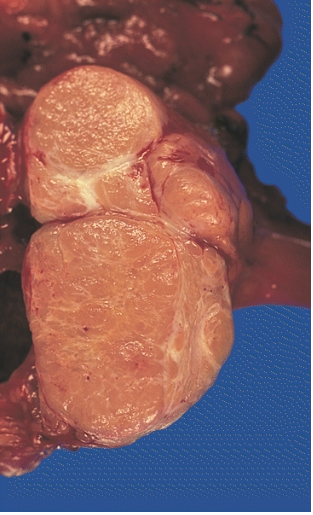 |
Associated Disorders
A third of the patients who have a thymoma detected because they have an associated autoimmune disorder. The most common condition in this group is myasthenia gravis (of which 25-50% are associated with a thymoma); patients with myasthenia are routinely screened for thymoma. Other associated autoimmune conditions are pure red cell aplasia and Good's syndrome (thymoma with combined immunodeficiency and hypoimmunoglobulinemia G). Rare associations that have been reported are: acute pericarditis, Addison's disease, agranulocytosis, alopecia areata, ulcerative colitis, Cushing's disease, hemolytic anemia, limbic encephalopathy, myocarditis, nephrotic syndrome, panhypopituitarism, pernicious anemia, polymyositis, rheumatoid arthritis, sarcoidosis, scleroderma, sensorimotor radiculopathy, stiff person syndrome, systemic lupus erythematosus and thyroiditis.[2]
References
- ↑ "http://www.iarc.fr/en/publications/pdfs-online/pat-gen/bb10/BB10.pdf" (PDF). External link in
|title=(help) - ↑ 2.0 2.1 Thomas CR, Wright CD, Loehrer PJ (1999). "Thymoma: state of the art". Journal of Clinical Oncology : Official Journal of the American Society of Clinical Oncology. 17 (7): 2280–9. PMID 10561285. Retrieved 2012-01-18. Unknown parameter
|month=ignored (help) - ↑ "WHO histologic classification is a prognosti... [Ann Thorac Surg. 2004] - PubMed - NCBI".
- ↑ "http://www.iarc.fr/en/publications/pdfs-online/pat-gen/bb10/BB10.pdf" (PDF). Retrieved 26 February 2014. External link in
|title=(help)